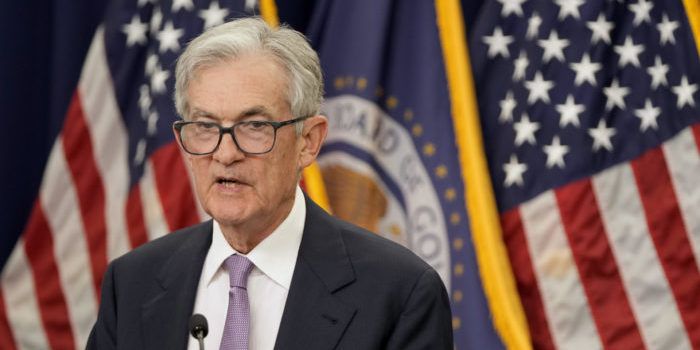(Headline USA) The Federal Reserve cut its key interest rate Thursday by a quarter-point in response to the steady decline in the once-high inflation that had angered Americans and helped drive Donald Trump’s presidential election victory this week.
The rate cut follows a larger half-point reduction in September, and it reflects the Fed’s renewed focus on supporting the job market as well as fighting inflation, which now barely exceeds the central bank’s 2% target.
Thursday’s move reduces the Fed’s benchmark rate to about 4.6%, down from a four-decade high of 5.3% before September’s meeting.
The Fed had kept its rate that high for more than a year to fight the worst inflation streak in four decades, which began shortly after Biden took office and continued well into his second year, with top economic officials such as Treasury Secretary Janet Yellen insisting the issue was “transitory” rather than addressing it.
Since the Fed took measures to rein it in, however, annual inflation has fallen from a 9.1% peak in mid-2022 to a 3½-year low of 2.4% in September.
In a statement after its latest meeting ended, the Fed said the “unemployment rate has moved up but remains low,” and while inflation has fallen closer to the 2% target level, it “remains somewhat elevated.”
Likewise, cost-of-living expenses remain elevated, and possibly permanent, which has disproportionately hurt the middle-class voters who turned out in droves to back Trump.
Although inflation—which is largely the result of unfettered federal spending—is the rate at which the U.S. dollar is devalued over a given interval, the resulting price increases rarely fluxuate with it since companies, retailers and service providers may be forced to increase their pay scales and operating budgets, passing the extra cost on to consumers.
After their rate cut in September—their first such move in more than four years—the Fed’s policymakers had projected that they would make further quarter-point cuts in November and December and four more next year. But with Trump having already promised to replace Fed Chair Jerome Powell and more radical-left members of the central bank, further rate cuts may become less likely.
Although Trump previously presided over low rates of inflation, some fear his plan to impose at least a 10% tariff on all imports, as well as significantly higher taxes on Chinese goods, and to carry out a mass deportation of illegal immigrants may boost it once more, further reducing the chances that the Fed would continue cutting its key rate.
Goldman Sachs estimated that Trump’s proposed 10% tariff, as well as his proposed taxes on Chinese imports and autos from Mexico, could send inflation back up to about 2.75% to 3% by mid-2026.
Despite the political undertones of the Fed’s recent cuts, Powell insisted during a news conference that “in the near term, the election will have no effects on our [interest rate] decisions.”
Powell said the Fed intends, over time, to keep reducing its key rate toward what the central bank calls “neutral”—a level that neither restricts nor stimulates growth.
However, he and other officials have acknowledged that they don’t know exactly where the neutral rate is.
“We’re on a path to a more neutral stance,” the Fed chair said. “That has not changed at all. We’re just going to have to see where the data is.”
The economy is further clouding the picture by flashing conflicting signals, with growth solid but hiring—which was buoyed largely by government-subsidized jobs—now weakening.
Financial markets are throwing yet another curve at the Fed: Investors have sharply pushed up Treasury yields since the central bank cut rates in September. The result has been higher borrowing costs throughout the economy, thereby diminishing the benefit to consumers of the Fed’s half-point cut in its benchmark rate, which it announced after its September meeting.
Rate cuts by the Fed typically lead to lower borrowing costs for consumers and businesses over time. Yet this time, mortgage rates that fell in anticipation of rate cuts have since bounced back up as the economy has grown briskly, fueled by consumer spending.
High borrowing costs not only for mortgages but also for car loans and other major purchases, even as the Fed is reducing its benchmark rate, has set up a potential challenge for the central bank: Its effort to support the economy by lowering borrowing costs may not bear fruit if investors are acting to boost longer-term borrowing rates.
The economy grew at an annual rate just below 3% over the past six months, while consumer spending—fueled by higher-income shoppers—rose strongly in the July–September quarter.
But companies have scaled back hiring, with many people who are out of work struggling to find jobs. Powell has suggested that the Fed is reducing its key rate in part to bolster the job market.
If economic growth continues at a healthy clip and inflation climbs again, though, the central bank will come under growing pressure to slow or stop its rate cuts, particularly now that Democrats are out of power, meaning left-wing economists and media have no further insterest in putting their thumb on the scales.
Adapted from reporting by the Associated Press

